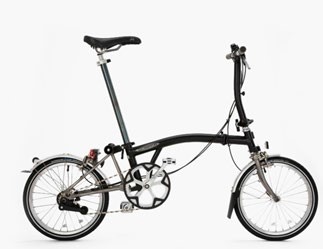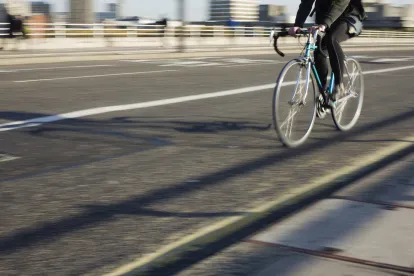On 11 June 2020, the Court of Justice of the European Union (CJEU) handed down its decision in the referral from the Belgium Companies Court (Tribunal de l’entreprise de Liège) arising from copyright infringement proceedings by Brompton Bicycle Ltd (Brompton) against a Korean company Get2Get Chedech (Get2Get) relating to its folding bike.
The decision is good news for designers and creative businesses as it lays a foundation for new opportunities for copyright protection and enforcement in Europe. This evolving area of law now requires a low threshold for protection, with a suggestion from the CJEU that minor creative choices in products will be sufficient for a finding of copyright protection.
Background
The UK Company, Brompton markets a folding bicycle, sold in its current form since 1987 (the Brompton Bicycle) and a staple of UK and EU consumers for many years (shown below):

Following the expiry of Brompton’s patent for the Brompton Bicycle, Get2Get started selling similar folding bikes in Belgium. In response, Brompton sued Get2Get for copyright infringement. In its defence, Get2Get argued that the appearance of its bicycle is dictated by the technical solution sought, being so that the bicycle can fold into three different positions.
The Belgium Companies Court was not certain as to whether copyright subsists in shapes “necessary to obtain a technical result” so it referred the following questions to the CJEU for a preliminary ruling:
- Must EU law, in particular Directive [2001/29] (the Information Society Directive), which determines, inter alia, the various exclusive rights conferred on copyright holders, in Articles 2 to 5 thereof, be interpreted as excluding from copyright protection works whose shape is necessary to achieve a technical result?
- In order to assess whether a shape is necessary to achieve a technical result, must account be taken of the following criteria:
a. The existence of other possible shapes which allow the same technical result to be achieved?
b. The effectiveness of the shape in achieving that result?
c. The intention of the alleged infringer to achieve that result?
d. The existence of an earlier, now expired, patent on the process for achieving the technical result sought?’
Answers to the questions referred
Ultimately, the CJEU held that copyright protection may arise for products whose shape is, at least in part, necessary to obtain a technical result, provided that the
“product is an original work resulting from intellectual creation, in that, through that shape, its author expresses his creative ability in an original manner by making free and creative choices in such a way that that shape reflects his personality“.
In reaching its decision, the CJEU considered earlier case law, including the influential decision from late 2019 in Cofemel (C-683/17) (previously reported here), whereby for an item to be original subject matter
“it is both necessary and sufficient that the subject matter reflects the personality of its author, as an expression of his free and creative choices”.
Additionally, the CJEU reiterated that copyright protection arises for the expressions of ideas and not the ideas themselves.
With respect to the proposed criteria put forward in the referral, the CJEU found that the existence of other possible shapes which allow the same technical result to be achieved is not decisive and may be considered, but the intention of the alleged infringer is entirely irrelevant. The other two criterion meanwhile could also be considered in so far as they make it possible to reveal what was considered in choosing the shape of the product concerned, however the existence of patent or other IP rights in the same product does not automatically preclude copyright protection.
Accordingly, with respect to the Brompton Bicycle, it is now for the Belgium Companies Court to determine, taking account of all the relevant aspects of the case as they existed at the time the design was created:
- Whether it is a ‘work’; and
- Whether its shape is exclusively dictated by technical considerations, rules or other constraints, which have left no room for creative freedom.
Implications
Ultimately, the CJEU’s decision builds on the line of EU case law in recent years and extends copyright protection to functional products across all EU member states. This protection was limited historically in countries such as the UK. Building on decisions such as Cofemel, it is apparent EU intellectual property rights are more likely to be considered independently and the mere fact that multiplicity of rights may arise is irrelevant provided that the specific eligibility requirements are met.
Additionally, it is noteworthy that the CJEU declined the opportunity to follow the approached suggested by Advocate General Campos Sánchez-Bordon in the preliminary ruling that the original designer’s intention could be a relevant consideration as they would have been seeking either to achieve an intellectual creation or to protect and commercialize a product. If the Advocate General’s approach had been followed this could have bad news for Brompton and other EU designers, although the constraints of copyright protection for functional items remain clear.





 />i
/>i
